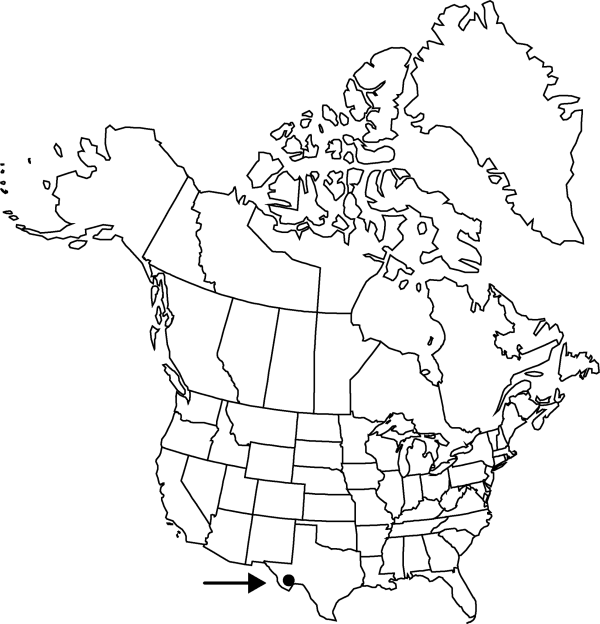Thelocactus bicolor var. flavidispinus
Beitr. Sukkulentenk. Sukkulentenpflege 1941: 6. 1941.
Plants unbranched (very rarely branched), deep-seated in substrate. Stems flat-topped when young, ± spheric (rarely short cylindric when old), 3–9(–13) × 4–6(–7) cm, surface hidden by spines; ribs poorly defined, ca. 13, tubercles confluent only at extreme bases (youngest sexually mature plants strictly tuberculate), 8–15 mm wide; areoles spaced 6–15 mm apart along ribs. Spines yellow (very rarely some individuals red); radial spines 12–20 per areole, longest spines 9–18(–24) mm; adaxial (bladelike) spines 18–35(–40) × 0.5–1.5 mm; central spines (0–)1(–4), longest spines terete, (9–)13–18(–24) × 0.4–0.5 mm. 2n = 22.
Phenology: Flowering Mar–Sep.
Habitat: Caballos novaculite outcrops in semidesert grasslands
Elevation: 1200-1300 m
Discussion
Thelocactus bicolor var. flavidispinus is the most widespread of the several taxa of cacti endemic to novaculite, a highly fractured, quartzlike rock. Unusually tall and/or red-spined individuals within populations of var. flavidispinus have been the basis for mistaken reports of var. bicolor in the region of novaculite, where only var. flavidispinus occurs. The reports of var. flavidispinus in south Texas (Starr County; L. D. Benson 1982) are based on misidentified T. bicolor var. bicolor.
Selected References
None.
